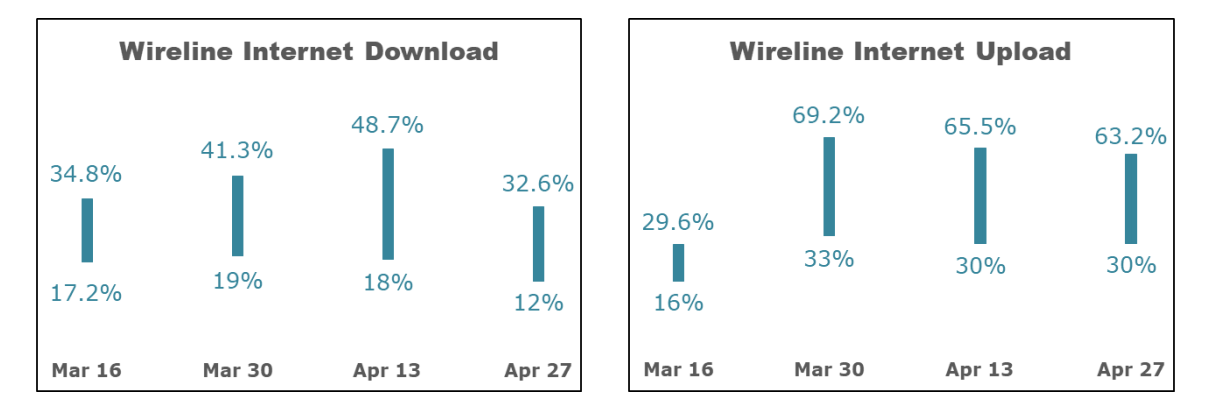
Wireline home internet usage has increased by as much at 48.7 percent in terms of download traffic and 69.2 percent for upload amid the COVID-19 pandemic.
The Canadian Wireless Telecommunications Association (CWTA) conducted a study examining Canadians’ consumption of telecommunications services during the health crisis. The association collected information regarding wireline and mobile traffic and measured it against a pre-COVID-19 baseline.
It’s not surprising that home wireline internet use has increased, since businesses and organizations across the country are working from home.
The CWTA notes that a major contributor to the increase in upload traffic is the use of data-intensive online collaboration tools to help businesses meet virtually. Video conferencing tools are also being used by schools and people who want to stay in touch with loved ones.

Further, the study outlines that for some carriers, mobile data traffic has decreased since many Canadians are limiting trips outside their homes. However, not all carriers reported a decrease in mobile data traffic, as there were wireless data download and upload increases of 28.9 and 26.6 percent.
Mobile voice call minutes increased across all of the carriers included in the study, and saw a jump of as much as 60 percent. This increase could be attributed to people making more calls to their loved ones, and remote workers contacting members of their workforce as they work from home.
The CWTA says that although the duration of the COVID-19 pandemic is uncertain, the demand for telecommunications services will continue to grow.
“That is why, working in partnership with governments at all levels, Canada’s facilities-based carriers are continuing to expand and upgrade all forms of telecommunication infrastructure, including in underserved areas,” the CWTA states in its report.
The association conducted this study by surveying Bell, Rogers, Telus, Freedom Mobile, Vidéotron, SaskTel and Tbaytel. The results show the range of increase in data volume among participating carriers compared to their pre-COVID-19 baseline average. Each carrier’s baseline average was determined using their averages for February 24th, March 2nd and March 9th.
Image credit: Canadian Wireless Telecommunications Association
MobileSyrup may earn a commission from purchases made via our links, which helps fund the journalism we provide free on our website. These links do not influence our editorial content. Support us here.


